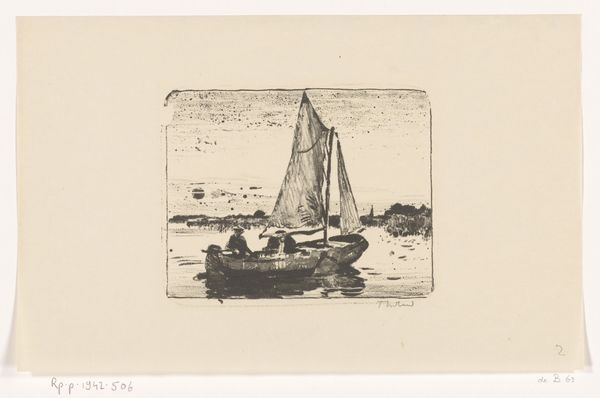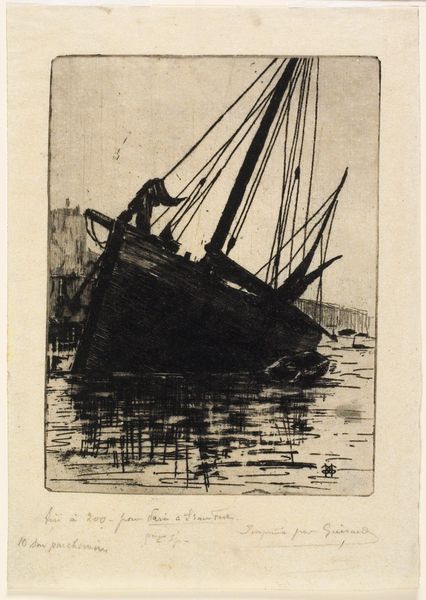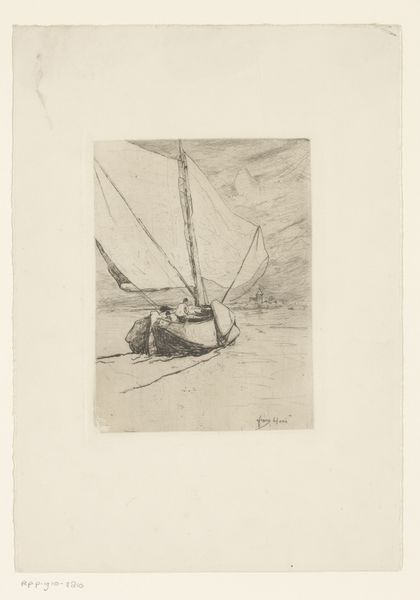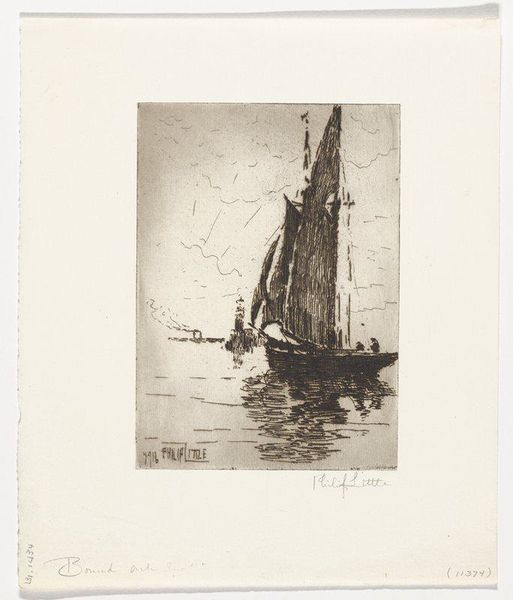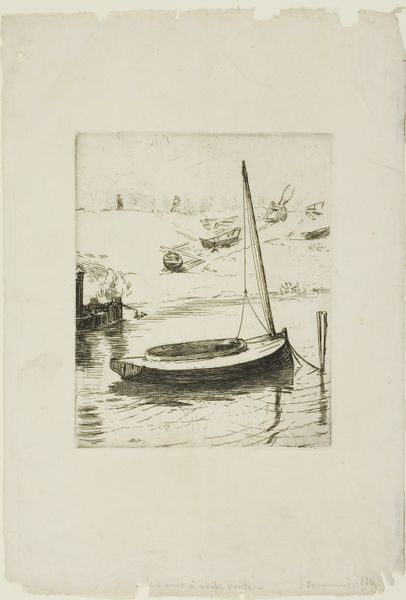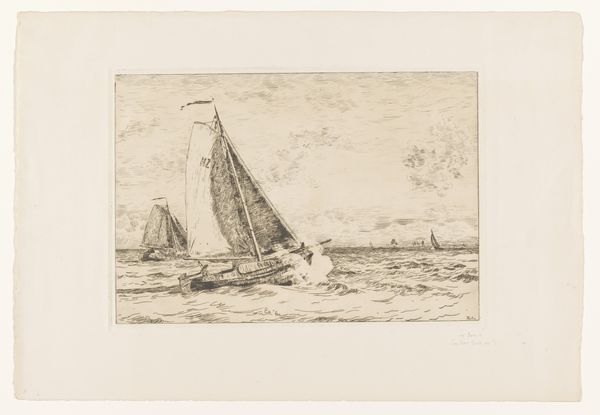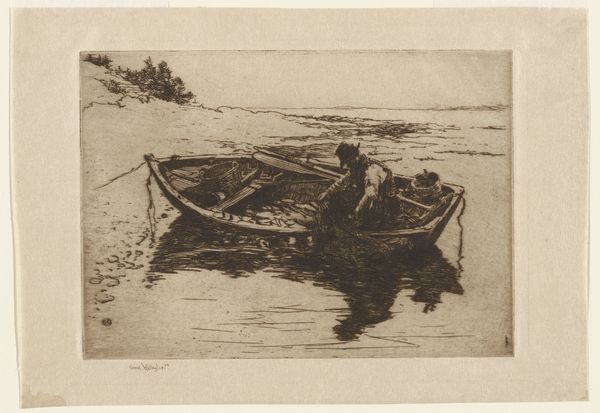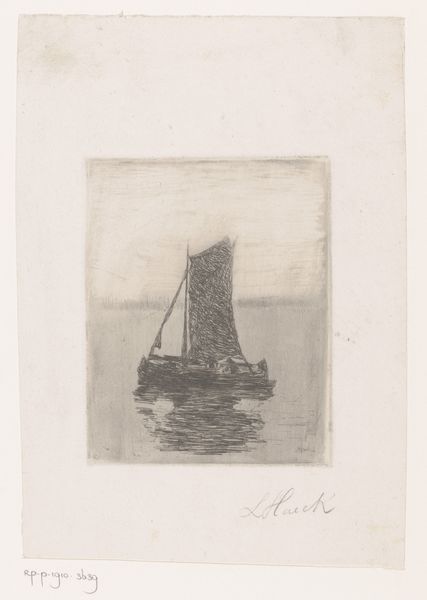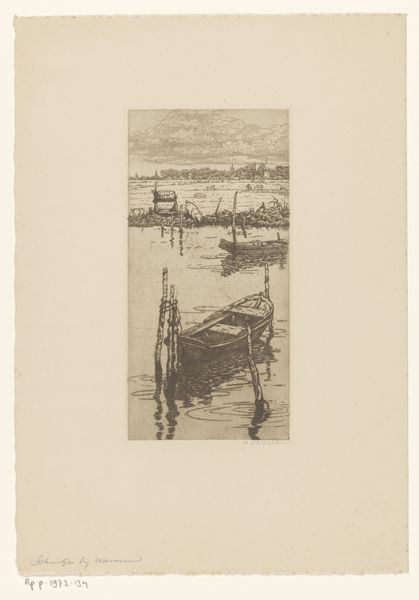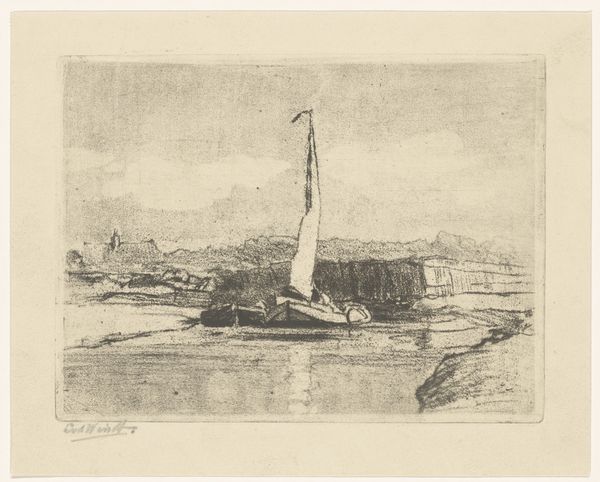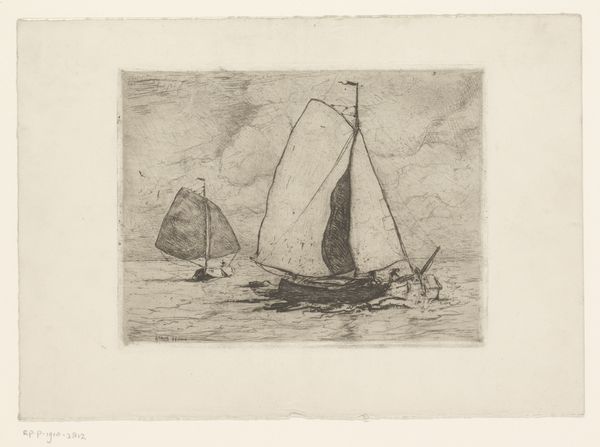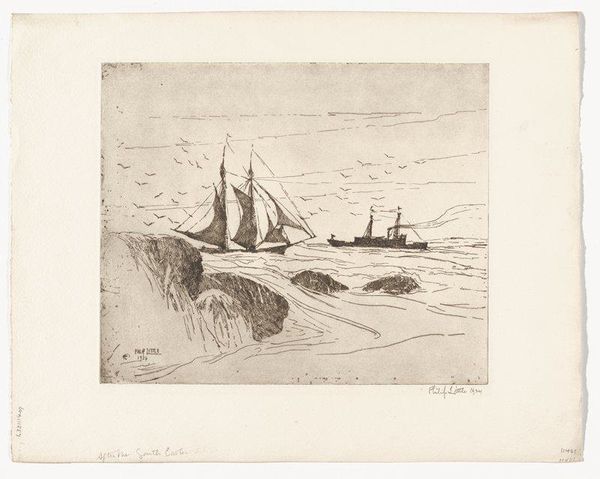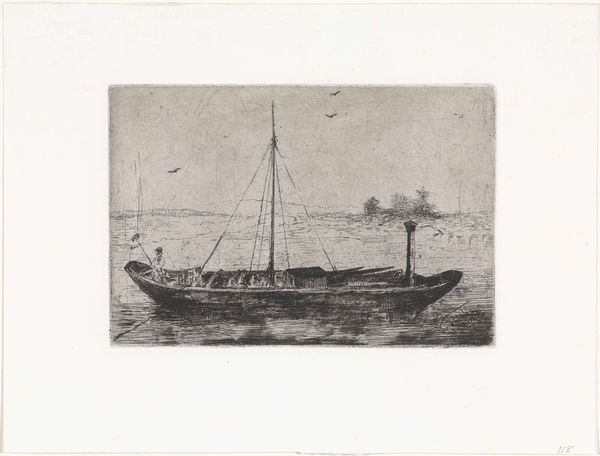
print, etching
# print
#
etching
#
landscape
#
genre-painting
#
realism
Dimensions: 9 15/16 x 7 7/8 in. (25.24 x 20 cm) (plate)14 x 11 5/8 in. (35.56 x 29.53 cm) (sheet)
Copyright: No Copyright - United States
Curator: This is "Smelt Fisherman," an etching created in 1915 by Philip Little, currently residing at the Minneapolis Institute of Art. Editor: It strikes me immediately as a rather solitary image. The fisherman in the foreground seems completely absorbed, almost isolated, despite the suggestion of other boats in the distance. Curator: That sense of isolation resonates deeply, doesn't it? Fishing, from a symbolic perspective, is so often connected to contemplation and the self. The lone figure with his fishing rod becomes an archetype of patience, mirroring perhaps humanity's enduring relationship with the natural world. Editor: Absolutely. And thinking about etching as a process, you've got the plate, the acid… there's a slowness, a deliberation to it that aligns with that feeling. Did Little work directly from observation, or might this be idealized? You can really see the process here; the way he rendered reflections on the water is economical, using these tight bundles of lines. I wonder, did Little actually partake in this smelt fishing activity, or was he just capturing what he saw? The details are pretty basic, I would be surprised if this was completely rendered in a studio setting. Curator: I find it interesting to see how the boat itself is darkened to shadow with the fisherman aboard, while the rest of the composition, especially the distant sailboats, appear so bright and full of light. As for working from direct observation, the "Smelt Fisherman" does feel like a captured moment, rendered with an intentional roughness—though the specific details remain unknown. But how might that connection, or lack thereof, affect our interpretation of his piece? Editor: I see it emphasizing the class and social context here; the distance between the individual worker alone on the sea and the commercial ships docked in the distance. Maybe even between the upper class having time to take a leisurly stroll and a person doing what he can to provide for his own. Curator: Fascinating to consider the class dimensions embedded here. Little seems to suggest continuity across the years; what we feel viewing this simple scene still has resonances today. Editor: Ultimately, thinking about materiality and that human engagement with a natural process gives depth. The history, the technique, even its size… all contribute to how that original observation evolved, and it's still there for us to examine now.
Comments
No comments
Be the first to comment and join the conversation on the ultimate creative platform.
